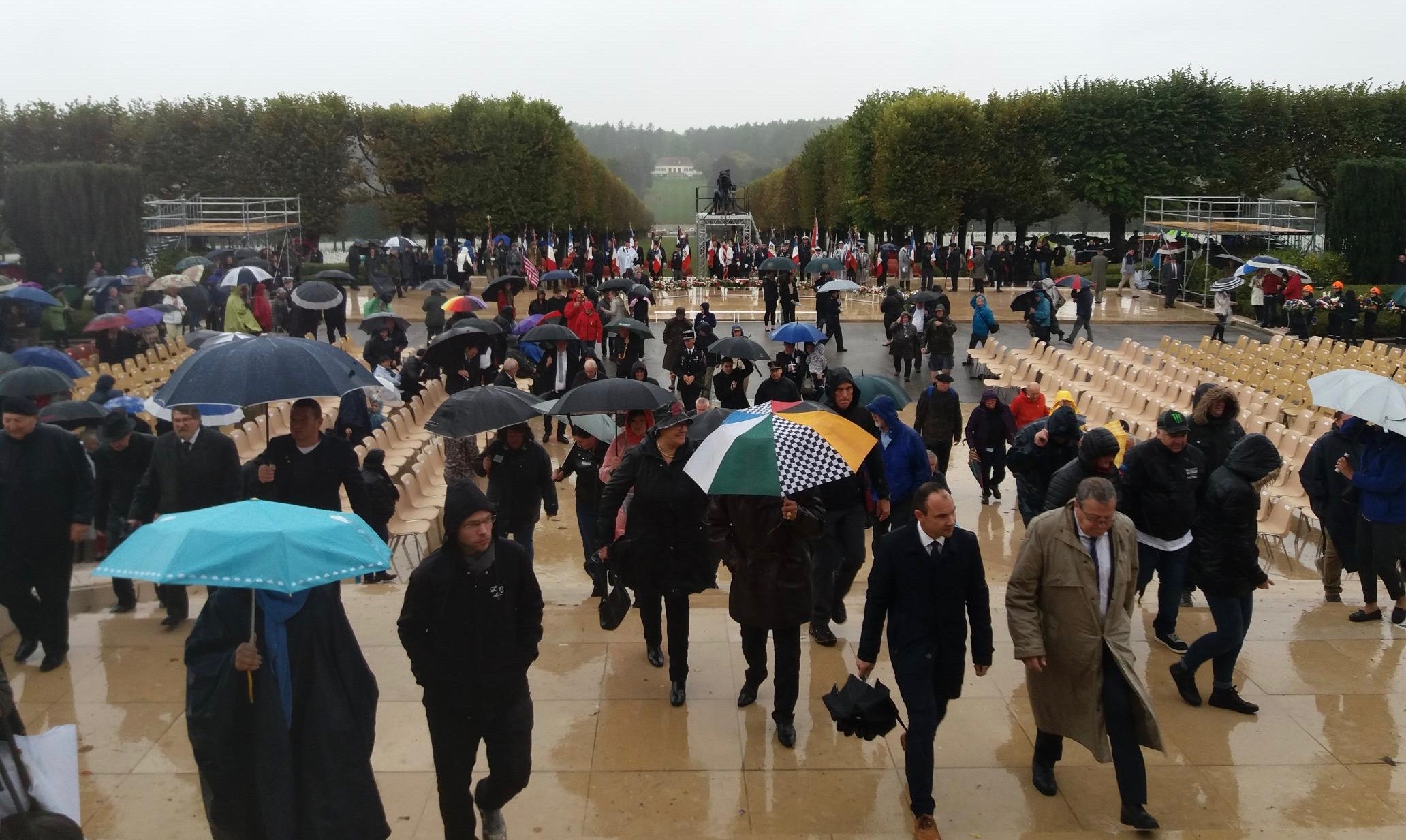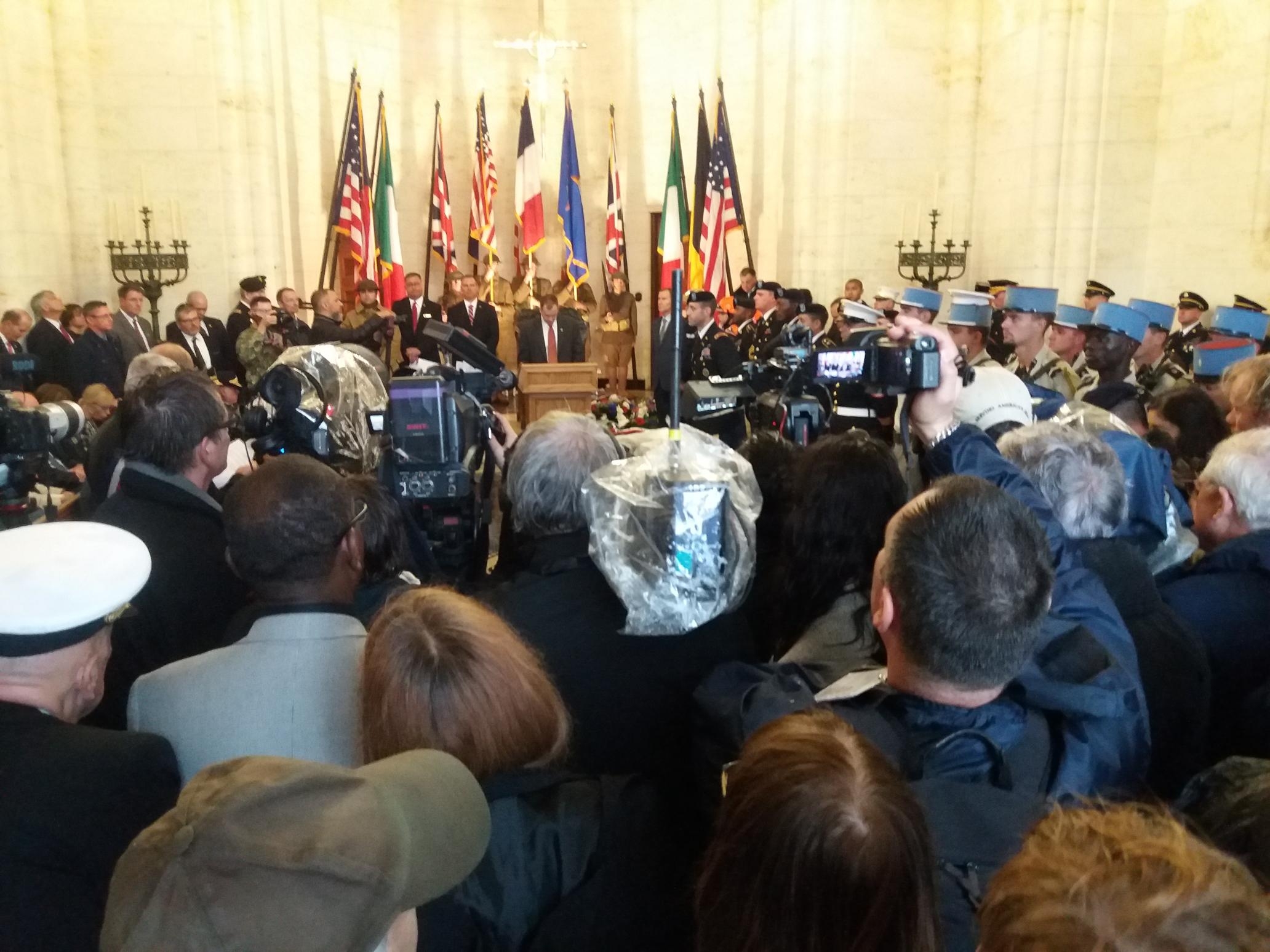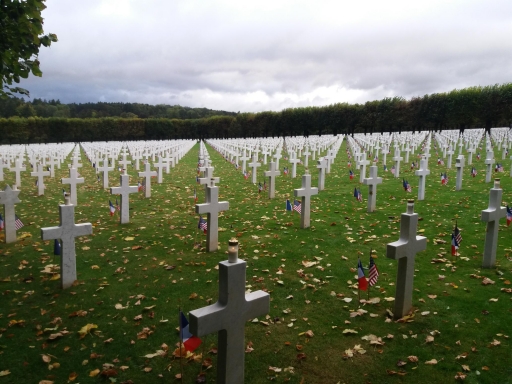On Sunday 23 September 2018 the American WW1 cemetery at Romagne-sous-Montfaucon in north-east France played host to a centennial ceremony, paying tribute to the 26,000 fallen of the United States’ Meuse-Argonne offensive 100 years ago. The campaign – which began the Allies’ last push of the war – remains the largest single battle ever fought by the American military. Patrick Gregory was there.
It began and ended in rain. Fittingly perhaps: a mirror image of the dank autumnal day in September 1918 when American Expeditionary Force commanders sent their troops into this treacherous upland terrain.
Sunday’s ceremony – three days ahead of the actual anniversary date itself of 26 September – saw modern-day representatives of the units from that epic battle joined by political and civic leaders, officials, relatives and members of the public. They came from America and France, from Britain and all over Europe to pay their respects.
 Romagne-sous-Montfaucon is Europe’s largest American military cemetery, the resting place of over 14,000 service personnel, the vast majority from the Meuse-Argonne offensive. It stretches over 130 acres up to a memorial chapel which sits on top of a ridge at its far side; and it was into the chapel on Sunday that as many visitors as possible crowded in from the rain, to listen to the speeches and dedications, leaving empty rows of seating outside.
Romagne-sous-Montfaucon is Europe’s largest American military cemetery, the resting place of over 14,000 service personnel, the vast majority from the Meuse-Argonne offensive. It stretches over 130 acres up to a memorial chapel which sits on top of a ridge at its far side; and it was into the chapel on Sunday that as many visitors as possible crowded in from the rain, to listen to the speeches and dedications, leaving empty rows of seating outside.
Welcoming guests, including US Army Secretary Mark Esper, the Secretary of the American Battle Monuments Commission William Matz reflected on how the grounds of the modern peaceful cemetery had once been witness to the bloody conflict of autumn 1918. But he wished to pay tribute to all who had served in the 1917 and 1918 period:
“Today we reaffirm our mission to honour [all] the soldiers who served in the Great War, a war that brought America into the modern age and thrust America onto the world stage.”

Prayers were followed by speeches from local dignitaries and remarks from Supreme Allied Commander Europe General Curtis Scaparrotti and France’s commanding officer of the Zone de Défense Est, Général Gilles Lillo.
A poem was read by a serviceman dressed as a WW1 Doughboy and wreaths of remembrance laid, one by Sandra Pershing, granddaughter-in-law of the commander of the American Expeditionary Force General John Pershing; and finally a minute’s silence and the playing of French and American national anthems by the US Naval Forces Europe Band.
Although President Donald Trump is still expected to visit France for Armistice commemorations in November, the Meuse-Argonne ceremony marks the last major WW1 memorial by the Americans in Europe.
Legacy
So as the Centennial itself begins to pass into history, what is the likely legacy of attempts to educate people in the United States and the rest of the world about America’s role in 1917 and 1918 – an often under-reported war? A question for US WW1 Centennial Commissioner Monique Seefried. She sees that legacy as being dependant on a properly coordinated teaching drive in schools in the US and via history institutions.
“We have finally been funded by the US Government to develop a series of education programmes with master teachers, with the History Channel, with the National World War 1 Museum in Kansas City and with the Gilder Lehrman Foundation: to really engage in a strong renewal on how WW1 is taught. So we really hope that through this Centennial we will be able in the future to bring back WW1 into the history programme so that when they are taught about the 20th Century in years to come, children do learn about both WW1 and WW2, and the peace which ensued.”
 The Memorial Chapel at Meuse-Argonne American Cemetery, dedicated in 1937.
The Memorial Chapel at Meuse-Argonne American Cemetery, dedicated in 1937.
Patrick Gregory is co-author with Elizabeth Nurser of ‘An American on the Western Front: The First World War Letters of Arthur Clifford Kimber 1917-18’ (The History Press) American on the Western Front & on Twitter @AmericanOnTheWF
See also in Centenary News:
‘Tout le Monde à la bataille’ – Allies strike across Western Front, 26-29 September 1918.
Images © Patrick Gregory
Posted by: CN Editorial Team
